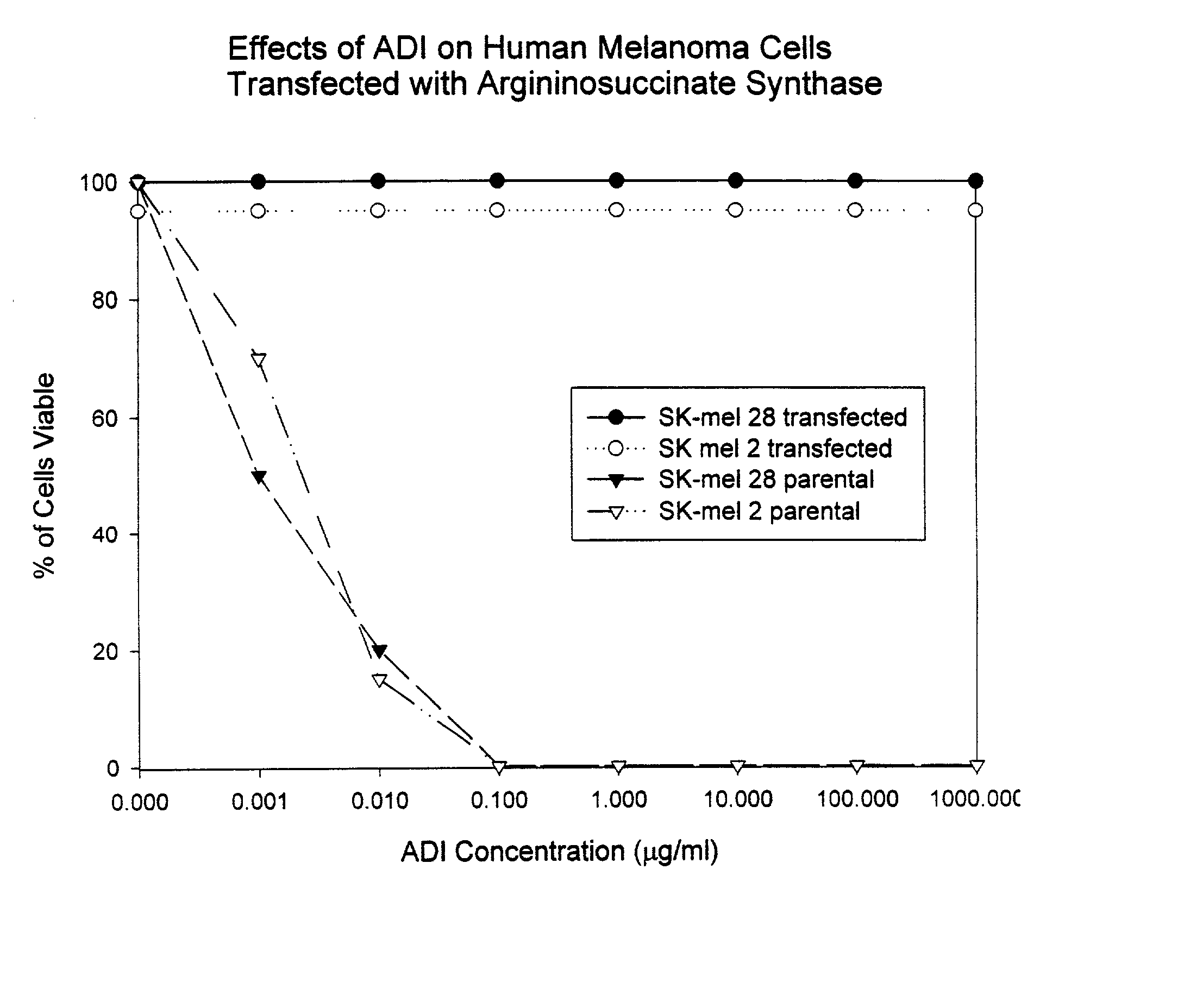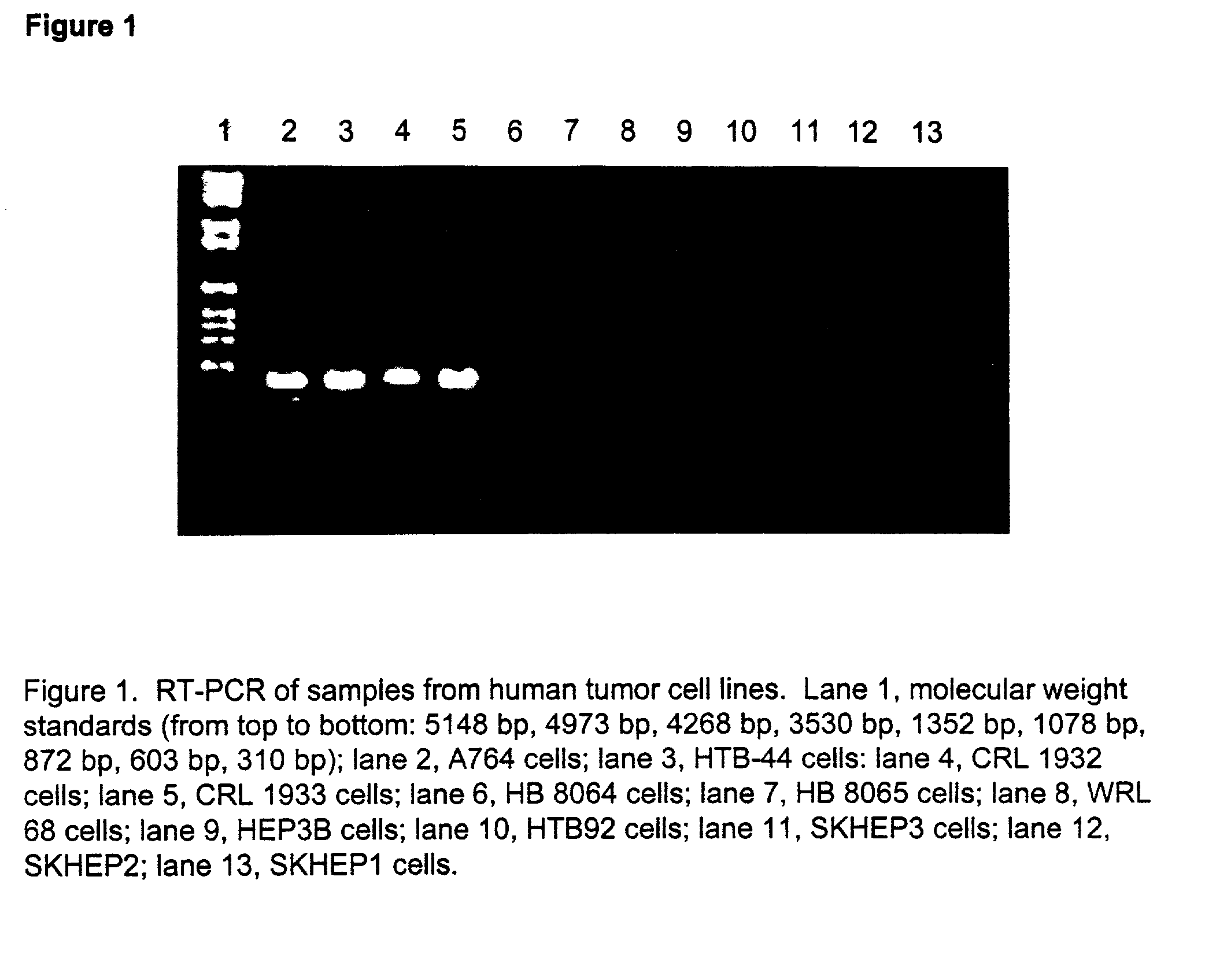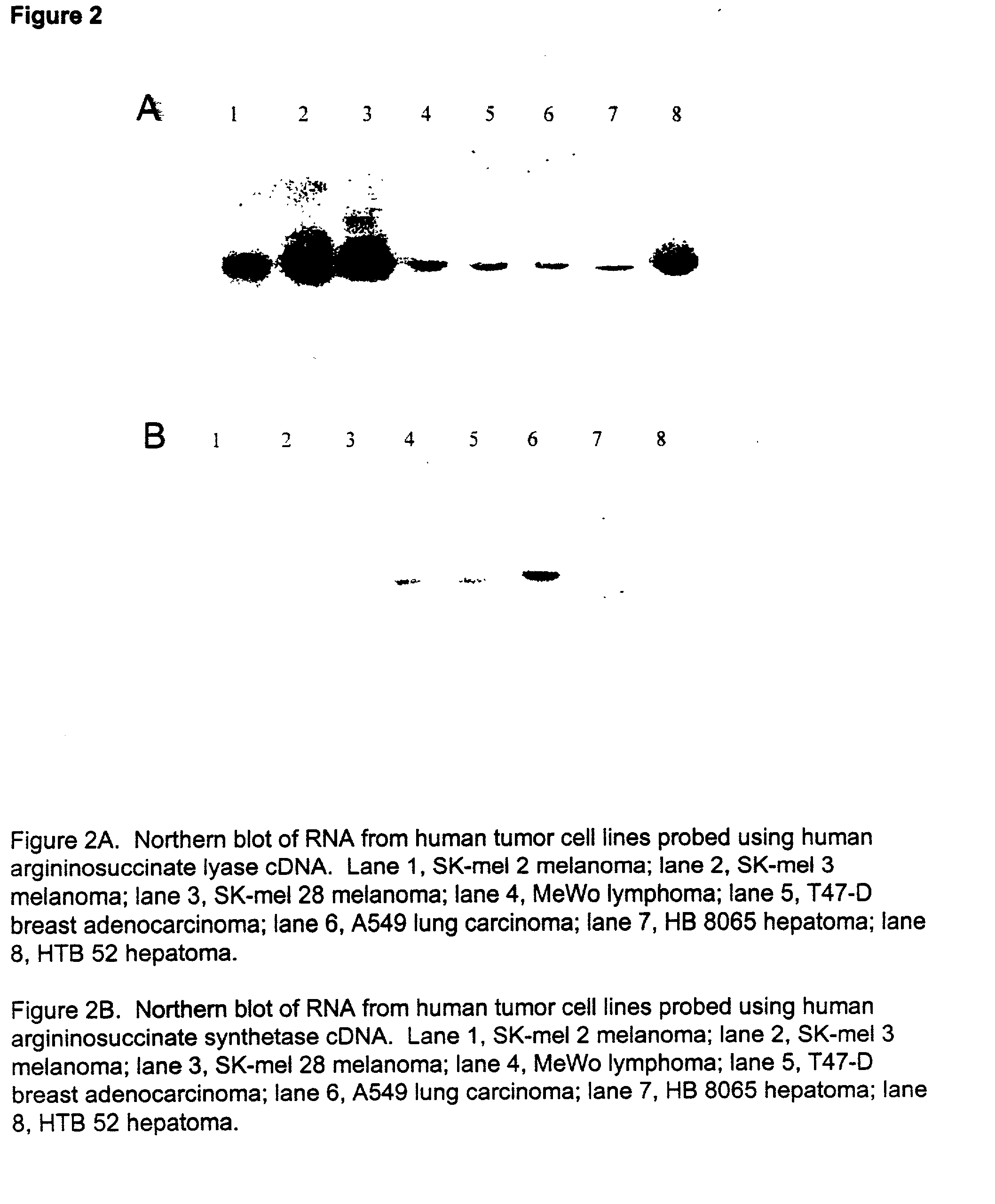Methods for predicting sensitivity of tumors to arginine deprivation
a tumor sensitivity and arginine technology, applied in the field of cancer, can solve the problems of hair loss, many of these cancer treatments have undesired side effects, and sarcoma is a relatively rare but often deadly cancer
- Summary
- Abstract
- Description
- Claims
- Application Information
AI Technical Summary
Benefits of technology
Problems solved by technology
Method used
Image
Examples
example 1
ASS Deficient Cells are Susceptible to Growth Inhibition by ADI Production of ADI
[0092] ADI was produced and purified by cloning the gene from Mycoplasma hominus and expressing the protein in E. coli. The gene for M. hominis ADI was isolated using the polymerase chain reaction (PCR). For expression of ADI in E. coli, the expression vector pQE70 (Qiagen) was used. ADI was purified to apparent homogeneity using ion-exchange chromatography. The specific activity of the purified ADI was 20 IU / mg of protein.
[0093] Cells and Cell Culture
[0094] Cells were obtained from the American Type Culture Collection (“ATCC”; Bethesda, MD), and are listed in Table 1. Sensitivity to ADI was determined by plating the tumor cells in 96 well plates in a volume of 0.1 ml / well. Various concentrations of ADI were added to each well. The plates were incubated for 72 hours at 37° C., then 0.02 ml of alamar blue was added to each well and the plates incubated an additional 5 hours. The absorbance of the wel...
example 2
Northern Blotting
[0097] Experiments were performed to determine the mutation that renders tumors sensitive to ADI treatment. To distinguish which mutation in citrulline metabolism was responsible for tumors becoming sensitive to ADI treatment, Northern blots were performed on mRNA isolated from a large number of tumors. These blots were probed with cDNA encoding ASS (SEQ ID NO:1) or ASL (SEQ ID NO:2).
[0098] RNA was isolated from human tumor cell lines grown in culture using guanidine isothiocynate. Approximately 1×108 cells were harvested by centrifugation at 300×g for 5 minutes at 4° C. and then resuspended in 4 M guanidine isothiocyanate containing 2-mercaptoethanol. The cells were homogenized using a Brinkman Polytron™ set on high for 15-30 seconds. One-tenth volume of 2M sodium acetate, pH 4.0, was added to the homogenate and mixed thoroughly. The homogenate was extracted using an equal volume of phenol:chloroform:isoamyl alcohol (25:24:1), and then centrifuged at 10,000×g for...
example 3
Transfection of Human Melanoma Cells to Constitutively Express the ASS Gene
[0102] To prove that the defect in the ADI sensitive cells was due to an inability to express ASS mRNA, ADI sensitive cells which, as shown above in Table 2, do not express ASS, were transfected with an expression plasmid containing the human ASS gene. The human melanoma cell lines SK-mel 2 and SK-mel 28 were transfected by electroporation with the expression plasmid containing the human ASS gene. The plasmid was constructed with the human cDNA encoding ASS under the regulation of a cytomegalovirus promoter. The plasmid also contained a neomycin resistance gene that allowed for selection of the melanoma cells that had been transfected. One million cells of each type were mixed with 50 μg of the expression plasmid and electroporated. Next the cells were plated out in 100 mm petri dishes containing growth medium. After 24 hours G418 was added to the culture to kill cells which had not taken up the expression p...
PUM
| Property | Measurement | Unit |
|---|---|---|
| Tm | aaaaa | aaaaa |
| temperature | aaaaa | aaaaa |
| temperature | aaaaa | aaaaa |
Abstract
Description
Claims
Application Information
 Login to View More
Login to View More - R&D
- Intellectual Property
- Life Sciences
- Materials
- Tech Scout
- Unparalleled Data Quality
- Higher Quality Content
- 60% Fewer Hallucinations
Browse by: Latest US Patents, China's latest patents, Technical Efficacy Thesaurus, Application Domain, Technology Topic, Popular Technical Reports.
© 2025 PatSnap. All rights reserved.Legal|Privacy policy|Modern Slavery Act Transparency Statement|Sitemap|About US| Contact US: help@patsnap.com



